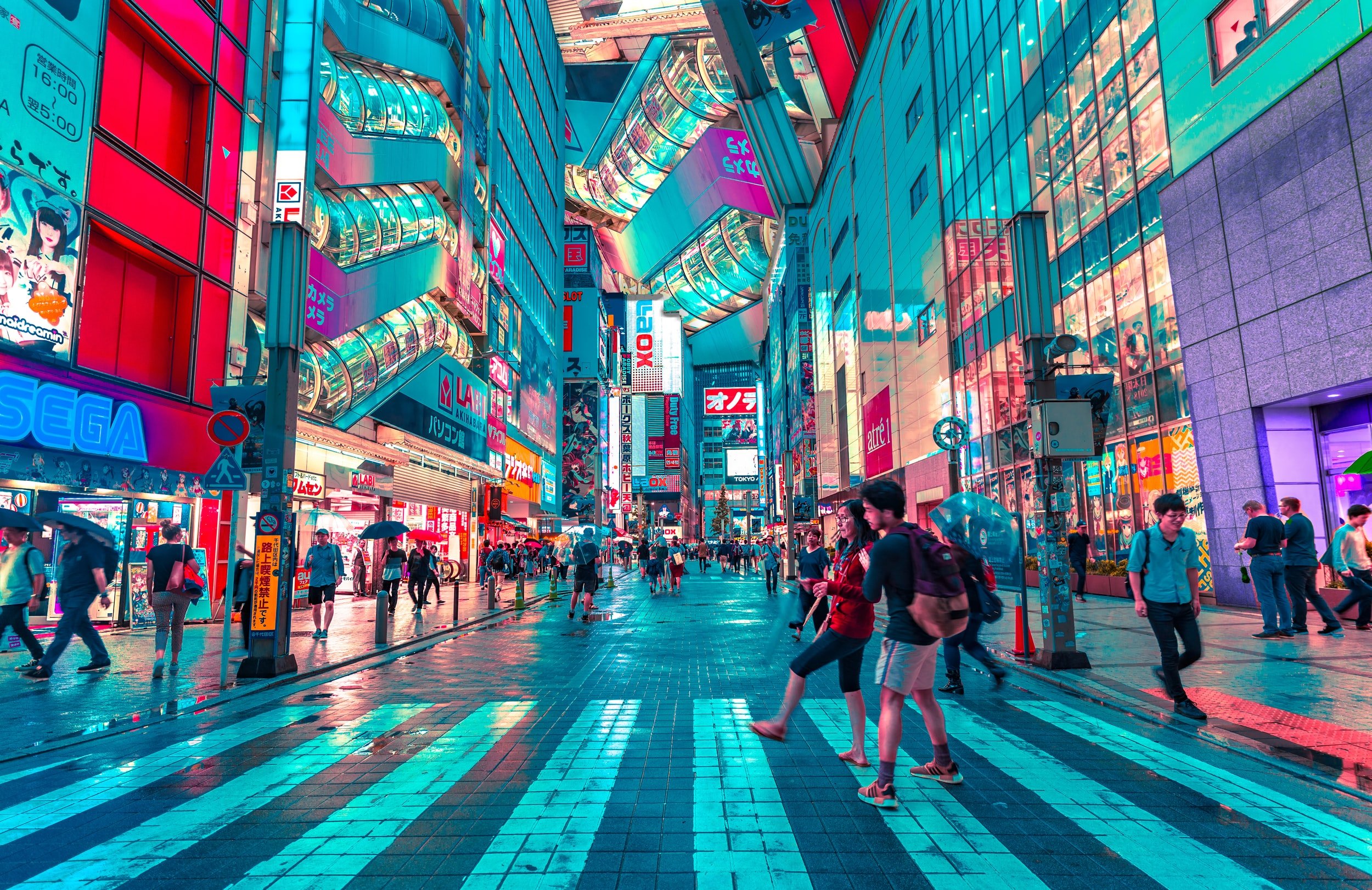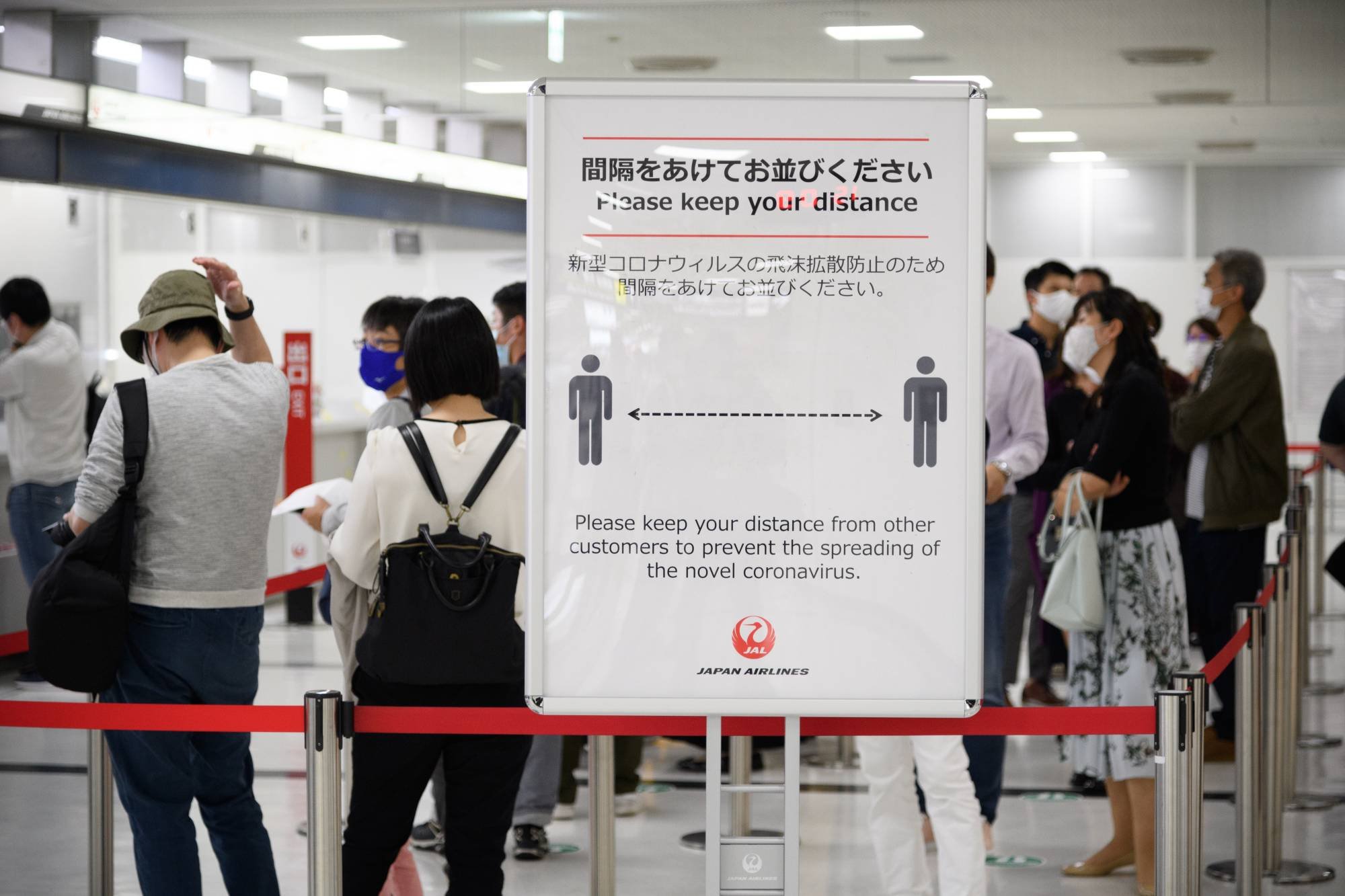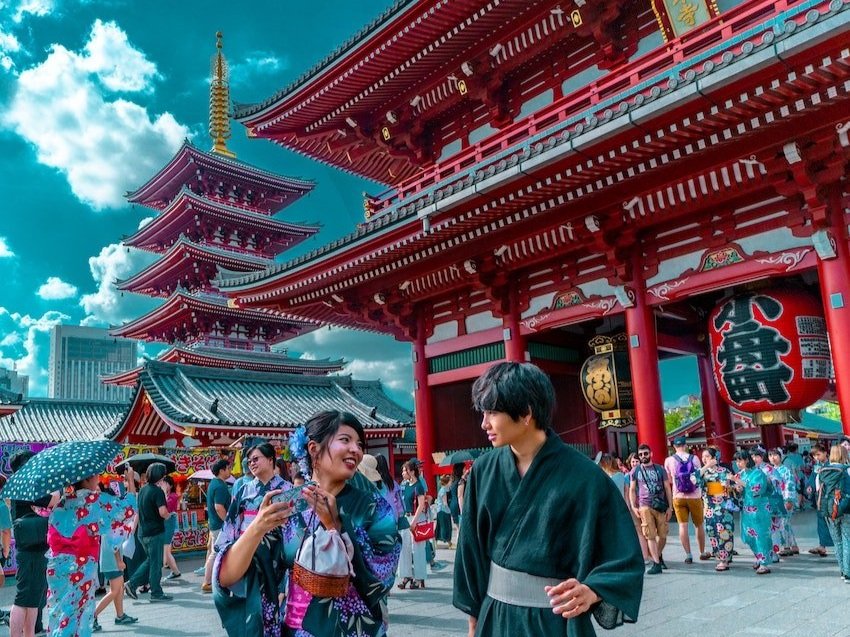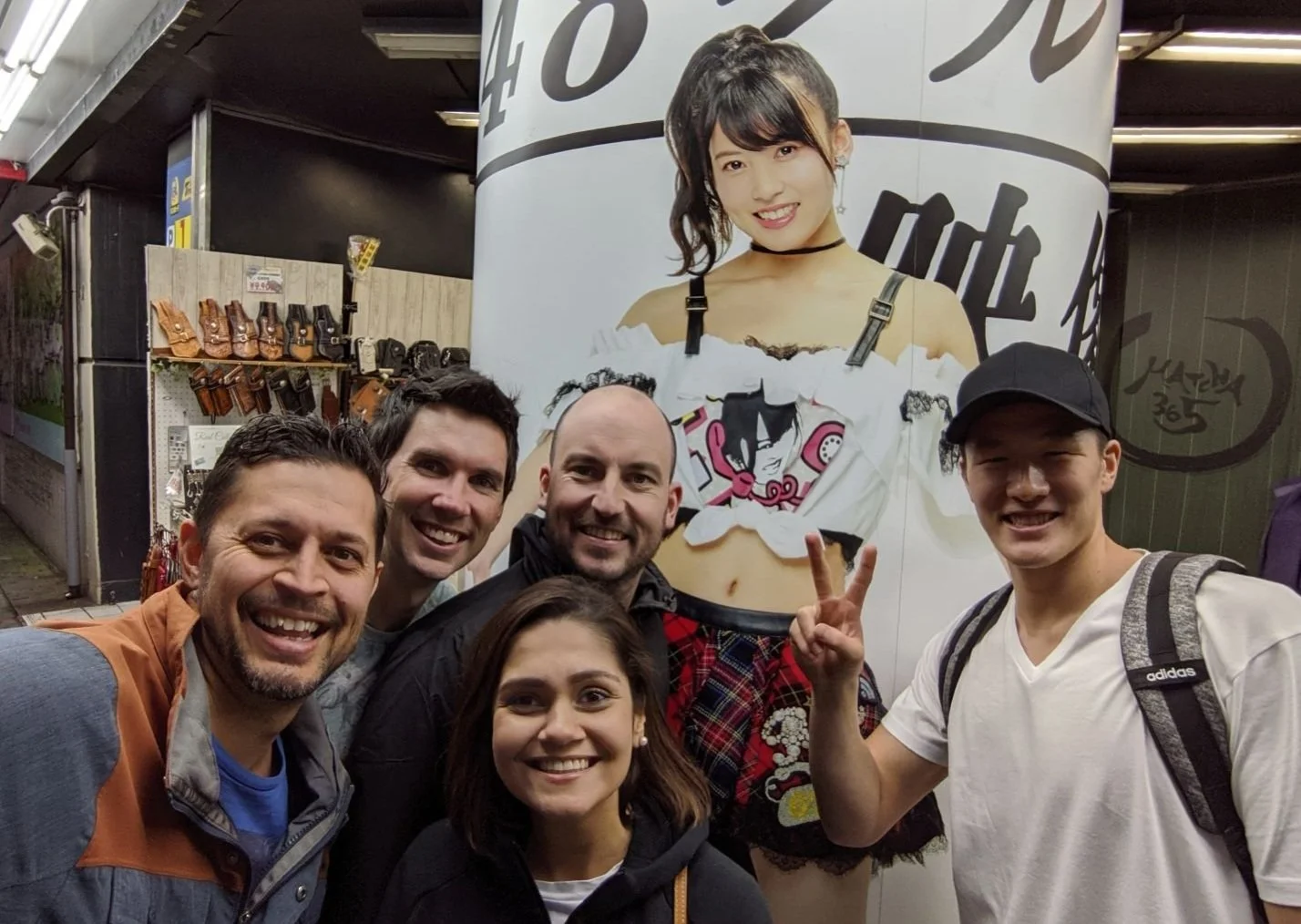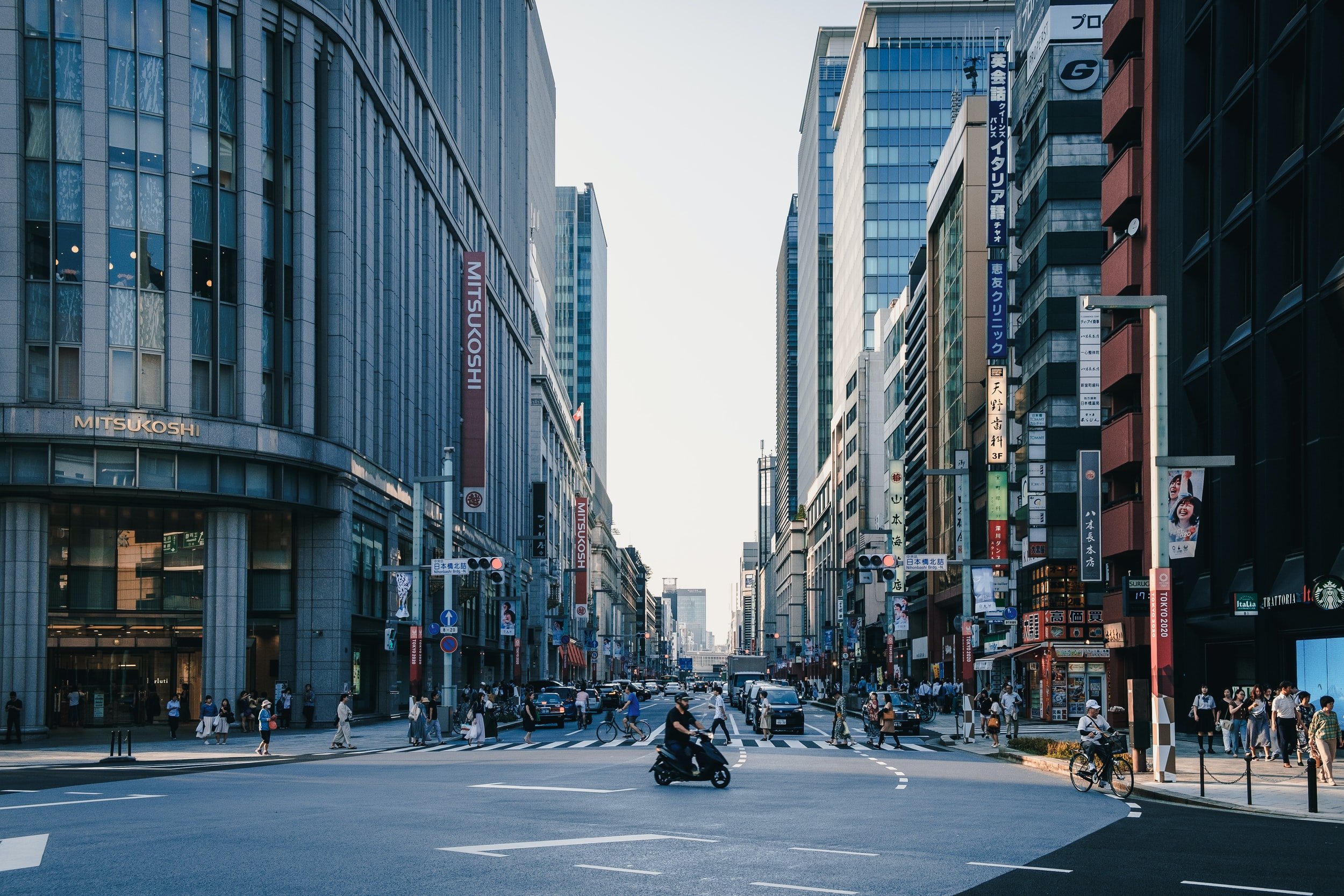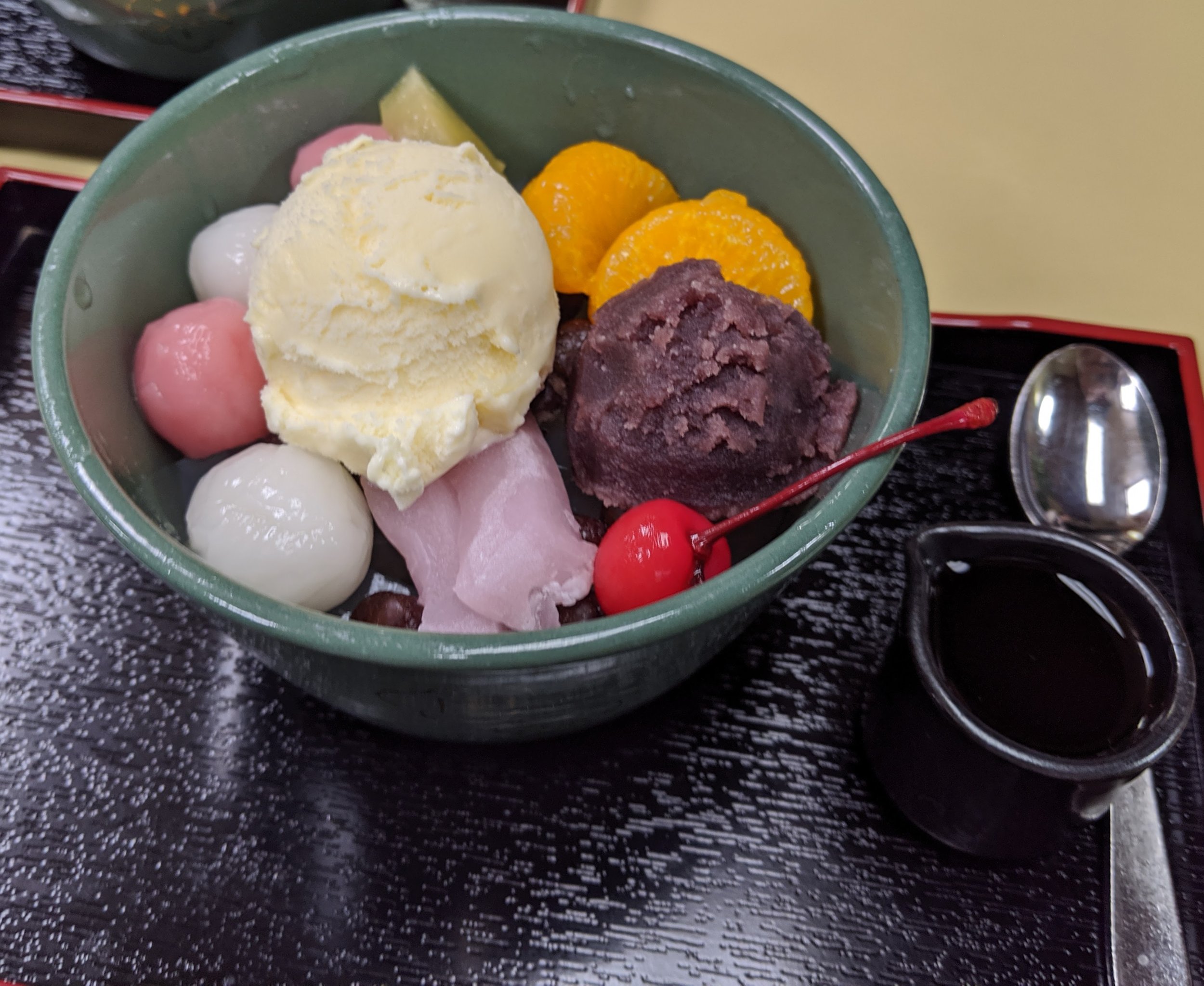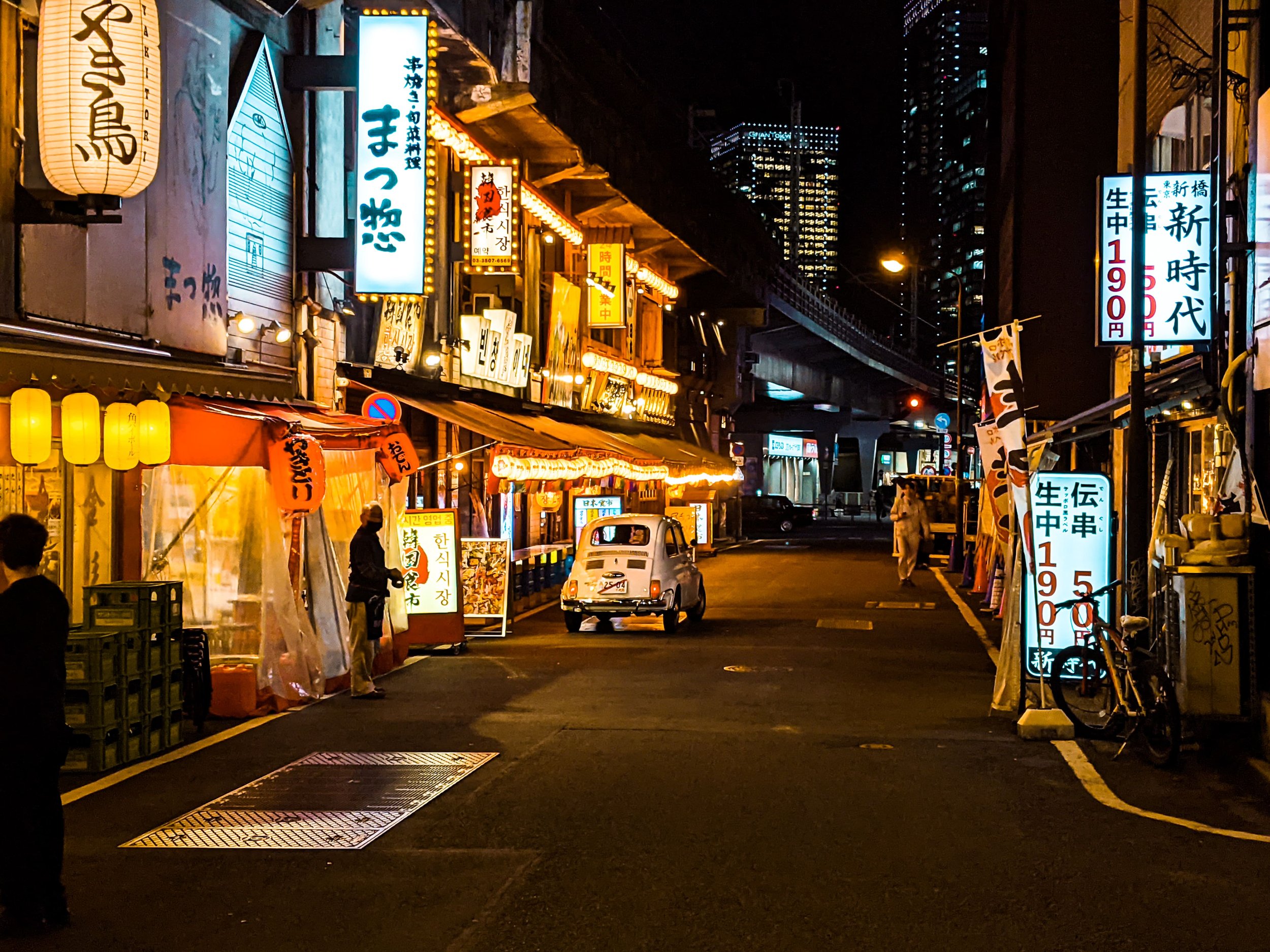Akihabara is a small town known internationally for all things that are geekery.
Tokyo is one of the biggest cities in the world. If you’re here for only a week or so, but you’ve seen all the main tourist attractions, try visiting these 4 hidden gems in Tokyo!
1. Nihonbashi
Nihonbashi is where Tokyo grew out of. Centred around the Nihonbashi bridge - which was built in 1603 - this city is a treasure trove of old shops and traditional stores. At first sight, it may look like a pretty, modern town, but underneath the modern cape that covers the town are stories that are over hundreds of years old. Some highlights include the first-ever department store in Japan: Mitsukoshi, the Bank of Japan, a Japanese paper shop that’s over 400 years old and dozens of shops that are 100+ years old! You can learn about Nihonbashi on our self-guided audio tour.
The main shopping street lined up with the world famous Mitsukoshi Department store on the left.
2. Yanaka
Yanaka is a lesser-known area of Tokyo. But Yanaka Ginza, the downtown shopping street highlights this area. Yanaka Ginza is a small shopping street that holds stores that are locally owned and have been around for decades. Butcher shops compete against each other where you can try their famous menchi-katsu or deep friend minced meat! Apart from Yanaka Ginza, Yanaka is filled with hundreds of small temples and even a beautiful green tea store that hosts green tea ceremonies. You can contact us for a tour to the green tea ceremony!
Entrance of the Yanaka Shopping Street in Tokyo
3. Zojoji Temple
This one might be more famous compared to Nihonbashi and Yanaka, however, as a local, I think that it’s a bit underrated. Meiji shrine and Sensoji Temple are often highlighted as the main shrines/temples of Tokyo. Zojoji is often seen in photos but not too visited. What makes it unique is the old temple, with Tokyo Tower sitting right behind it. It makes for a unique contrast between modern and tradition that’s often seen throughout Tokyo. This area is great because it’s right next to the Tokyo Tower, lots of bars/restaurants surrounding the area and even has Hamarikyu garden nearby, which is another great hidden gem!
Interested in visiting one of these places? Make sure to join us on a privtae customized Tokyo tour! Contact us below!
Interested in a Hello! Tokyo Tour? Contact us!
Connect with us for fun content!









![TOP THINGS TO DO IN TOYKO [3 HIDDEN GEMS FROM A LOCALS OPINION]](https://images.squarespace-cdn.com/content/v1/5d3ee66abacfa00001df6854/1659723019524-5I1Z8F3XWKH318SGA6LR/unsplash-image-layMbSJ3YOE.jpg)
